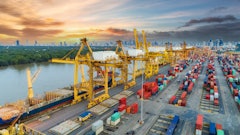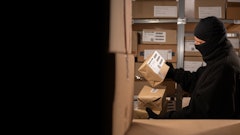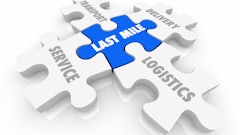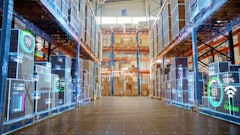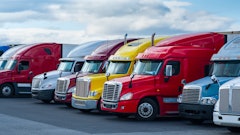VITAL STATS
Called Florida’s "First Coast" because it’s located on the Atlantic Ocean in the northeast corner of the state.
Population: 1.3 million
Land Area: 840 square miles
Logistics Hub: Jacksonville was ranked the second "most logistics--friendly" out of 328 cities
Play Time: Region boasts 60 miles of beaches and 70 golf courses.
More than 45 million consumers are within easy access to food distribution companies located in the Jacksonville, FL, area.
"We can reach this many people in an eight--hour drive," says Jerry Mallot, executive vice president of the Jacksonville Regional Chamber of Commerce. "Our location is central to the Southeastern marketplace, including Florida (with a population of more than 16 million people), Georgia, the Carolinas, Alabama and Mississippi," he says.
The main function of the chamber’s regional economic development group––called Cornerstone Regional Development Partnership––is to attract businesses to northeast Florida.
"One of the key areas we are focused on developing is food distribution," Mallot says. "In food, being close to the marketplace is a very important consideration. We have an outstanding transportation infrastructure that includes three interstate highways, three Class 1 railroads, a natural deep water port and multiple airports including Jacksonville International Airport––and all of these combine to make distribution here really happen."
Nearby interstates are I--95 going from Florida to Maine; I--10, which begins in Jacksonville and ends in California; and west of Jacksonville is I--75 going to southern Florida and north to markets in Atlanta and the Midwest. Class 1 railways are the CSX (headquartered in Jacksonville), the Norfolk Southern and the Florida East Coast Railway.
The area boasts two natural deep--water ports: Jax Port and the Port of Fernandina. Jax Port is one of the largest ports in the country and has three major terminals. About 60 percent of the activities at the port involve shipments of food to Puerto Rico.
As for utilities, electric power is abundant and affordable. The Jacksonville Electric Authority (JEA) handles the city’s electric, water and sewer functions. JEA belongs to a nationwide network of electric utilities that buys and sells power as needed. "We have always been a net seller of electricity during peak periods," Mallot says, adding the area has an abundant water supply to serve the water and sewage needs of food manufacturers and processors.
The area offers many business incentives, including state--sponsored Enterprise Zones and federal Empowerment Zones. "These zones generally involve sales tax deduction advantages and income tax credits," Mallot says. A local program offers revenue grants through a refund in property taxes for companies investing in physical expansion and capital investment which creates jobs in the local community. Workforce incentives abound as well, including a state program called Quick Response Training, which pays training costs for employees in order to help a company get on its feet after re--locating or expanding.
This program pays up to 100 percent of the cost, with certain caps, depending on the number of employees involved and the wage level of employees. Another state program––Qualified Targeted Industry––pays $3,000 or more per job created within targeted industries. "It’s paid in the form of a tax refund and is a very effective program attracting companies to this region," Mallot says.
A regional workforce board––WorkSource––is available for the continued training and upgrading of workforce skills over a long period of time and pays up to 100 percent of training costs.
As for the lifestyle in Jacksonville, it offers more than 60 miles of ocean beach and the largest urban park system in the country.
"The cost of living is among the lowest of other major cities in the country," Mallot says. "We try to keep our annual growth at about 2 percent, which is aggressive but manageable and allows us to build our infrastructure of roads, utilities and lifestyle amenities equal to or faster than our population growth."
----------------------------------
ICS Logistics
Close To Interstates, Rail Lines And A Port
"From a logistics provider perspective, we are really blessed by what I consider one of the premier areas of the country," says Jeff Spence, CEO of ICS Logistics in Jacksonville.
"Geographically, we sit in a sweet spot with three major interstates and rail lines. We also have a marine terminal which is unique in that most ports are really strapped for real estate––yet Jacksonville has capacity."
Spence notes there are multi--modal and tri--modal regions. "But this is really a quad--modal area,:" he says. This fourth mode includes the Cecil Commerce Center.
It’s the old Cecil Naval Air Station, with the third--longest runway in the state, and is surrounded by about 3,000 acres of prime and developable land for distribution space.
"It offers huge air cargo potential which––when you add it to our infrastructure assets of highways, trains and marine––offers an environment which is a great jumping--off spot for all the Caribbean Basin as well as South America and Europe."
ICS Logistics is an asset--based 3PL. "Our history is in perishable warehousing––which is how we got started in 1974,” Spence says. “We now focus on international trade because we are in an excellent port city."
Spence says that about 85 percent of the products ICS Logistics touches either starts or stops offshore––and about 60 percent of those products are perishable. ICS ships a lot of leg quarters to Russia––more than half the U.S. quota.
"We do a lot of inbound and outbound container work at our dockside facility and at our inland facility in Jacksonville," Spence says.
In fact, in 1993 the company started a small perishable warehouse at the Jacksonville Port Authority and since then that facility has already doubled in size.
On the non--perishable side of its business, ICS is currently constructing a 553,000--square--foot dry warehouse at the Jacksonville Port Authority––which is being built to serve an international manufacturer under a long--term contract which will support weekly ship calls from the Baltic Sea.
"There are 52 ships entering here a year so there are tremendous opportunities for non--perishable food items leaving the United States in an export mode on those returning ships," Spence says.
On the inbound side, ICS receives containers of products from overseas, which pass through either a USDA import inspection process (for red meat), or an FDA inspection (for seafood). Products are then transloaded and shipped by either truck or rail to one of ICS’s warehouses for distribution at a later date.
Spence notes some similarities between Jacksonville and San Diego. "Both cities are commerce--driven and not tourist--driven. If you look at San Diego prior to its first Super Bowl, you will get an idea of what Jacksonville is like at this moment––and you also get a sense of what our growth potential is here."
Spence hopes the Super Bowl, which was held in Jacksonville in the winter, gave the area some much--needed national exposure, unlocked the hidden values of the city in terms of infrastructure and geography, and helped identify it as a uniquely positioned logistical hub.





